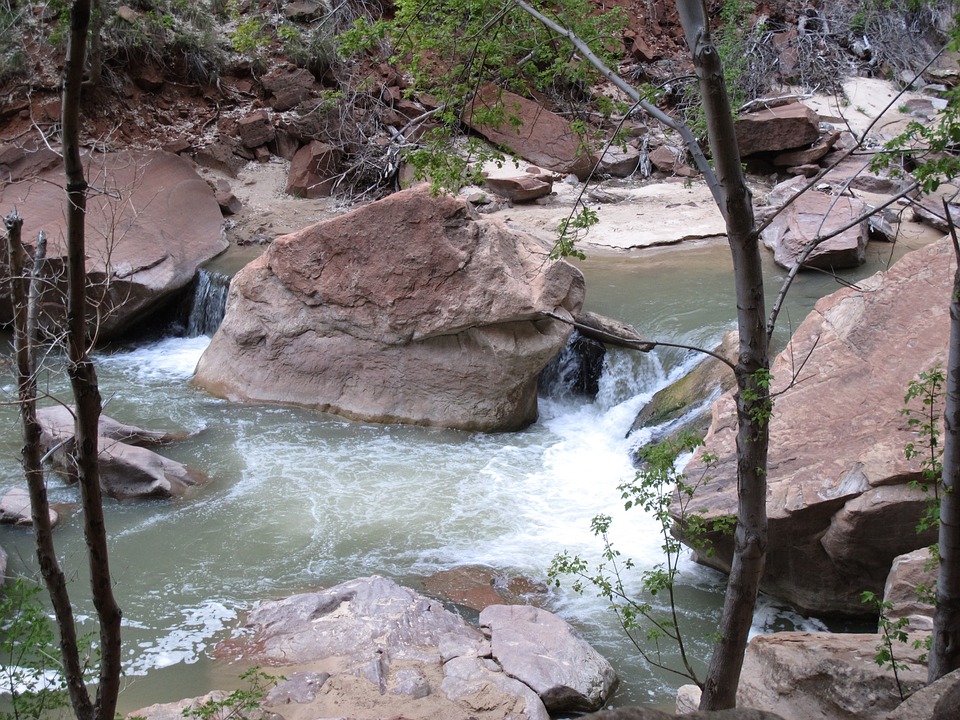Flooding can happen anywhere in the world, no matter what kind of weather prevails in the area. Despite being mostly a desert, Utah is one of those places that experiences occasional flooding. While Utah doesn’t flood due to hurricanes or tsunamis, it can get waterlogged due to too much rain or spring runoff.
Here are some examples of significant flooding events that have occurred in Utah in the last 150 years:
The 1861-62 Washington County Flood — On Christmas Day in 1861, Santa brought more than just presents to the residents in Washington County — he brought rain. It rained every day following Christmas for 40 days. In the town of Grafton, the river overflowed on January 8, flooding the town. A baby born on that day was named for the historic event. Other damage included Fort Harmony in north Washington County, which caved in, killing two children, as well as the fort in Santa Clara, which was swept away in the waters.
The Big Flood of 1923 — Overgrazing can cause flooding due to soil compaction, which is caused by the animals repeatedly walking on the soil. Soil compaction leaves little room for water to enter into the ground, which causes higher amounts of runoff when there is heavy rain. These conditions brought about the Big Flood of 1923 in Utah.
In 1923, land in the Wasatch Mountains was used to graze large amounts of livestock. In August of that year, a cloudburst rainstorm struck, causing water to run down the mountains and pour through canyons all along the Wasatch Front. Six deaths were recorded around Farmington Canyon and two were recorded near Willard Canyon. Among the flood’s victims were Boy Scouts and honeymooners.
The floods caused hundreds of thousands of dollars in property damages. Additionally, homes and crops were destroyed, and power was lost. Homes that did survive were filled with over a dozen feet of mud. The highway in Willard was also covered in mud and boulders that were carried in by the water.
The 1946 Sanpete County Flood — Pioneer Day in 1946 was an eventful day for the residents of Mount Pleasant in Sanpete County. What started off as a sunny day turned disastrous fast as a rainstorm came in, sending floodwaters through the canyon, along with rocks and other debris. Buildings were damaged, livestock was killed, bridges destroyed, and the town’s main street was under four feet of water. People who lived through the flood even described a large pine tree floating down the main street.
The 1958 Morgan County Flood — On August 16, 1958, a thunderstorm brought 6.75 inches of rain in an hour to Como Springs in Morgan County, causing a flash flood at around 4 p.m. The floodwaters burst through the canyons, flooding North Morgan and Round Valley. Joseph Rees, a resident of Round Valley, lost 60 acres of hay and almost lost 18 pure-bred bulls and 12 steers to the floodwater. However, Rees cut the cattle free of a fence they were trapped next to, saving their lives. He also saved his son Paul from drowning in the floodwaters.
Thistle Creek Flood in 1983 — The winter of 1982-83 brought record moisture into the Wasatch Mountains. The railroad town of Thistle, located in Spanish Fork Canyon, felt the force of that excess precipitation. On April 17, Thistle Creek overflowed, causing a landslide and floodwaters to engulf the town. Thistle became buried under water, turning into a lake when the muds from the landslide dammed the stream. Officials who were aware of a pending landslide and flood were able to evacuate residents before the water reached their homes. Residents in Spanish Fork were put on notice for an evacuation in case the makeshift dam failed. Thistle is now a ghost town.
The 2005 Virgin River Flood — More than $35 million of federal money was given to Washington County to help homeowners and repair infrastructure after the Virgin River flooded in 2005. The flooding destroyed 18 homes and damaged more than 200 homes. People who weren’t able to rebuild their homes on their former land were given the option to take plots that were donated.
The 2015 Hildale and Zion National Park Flash Floods — A flash flood struck the polygamous community of Hildale, which sits on the border between Utah and Arizona. Twenty people were killed in the flood, and a car was swept away by the waters. Flooding also occurred in the slot canyons at Zion National Park, killing seven people who were canyoneering.
From its beautiful red rocks to its endless number of canyons and mountain meadows, Utah is a desert oasis in the western United States. Major flooding is relatively rare in Utah, but historically, floods have devastated many communities in the Beehive State. While Utah is currently experiencing a drought and needs moisture, things could change quickly in the future.

